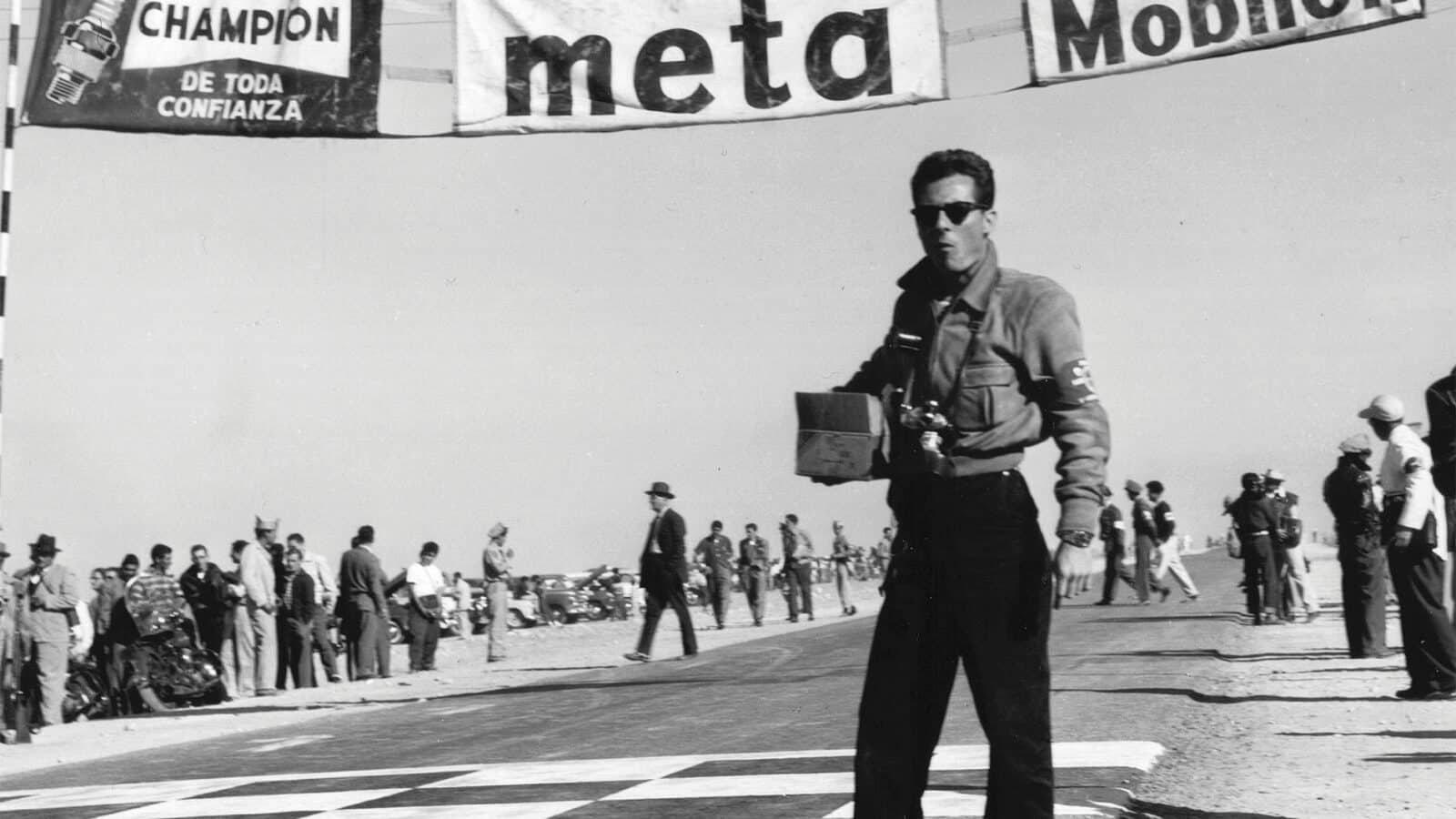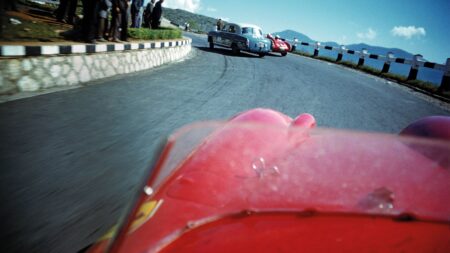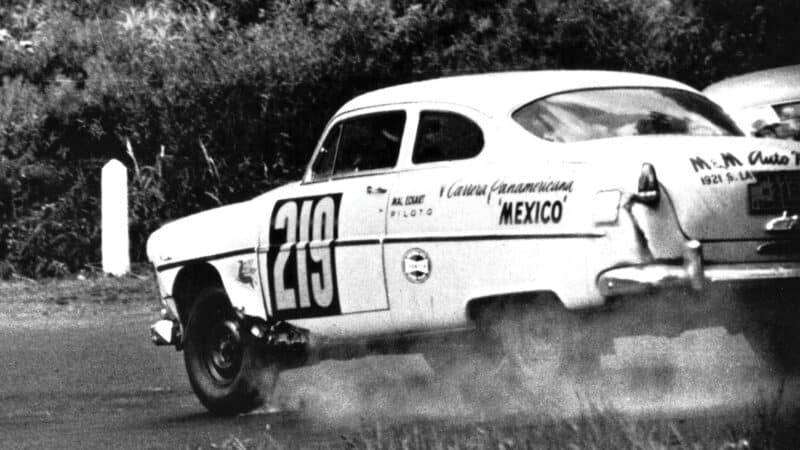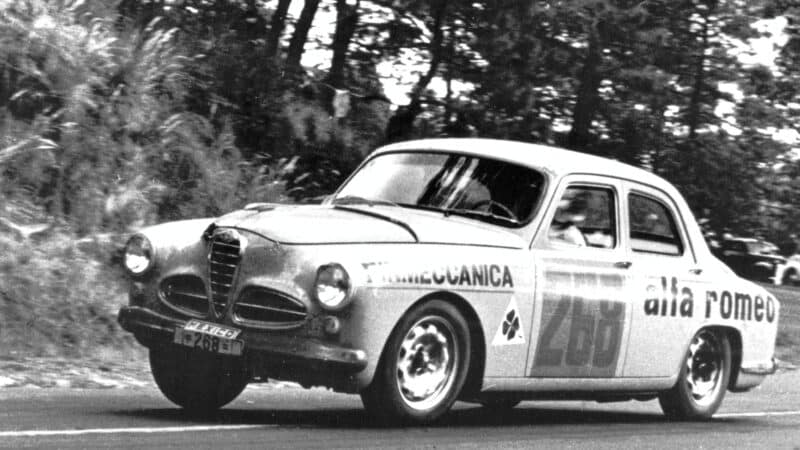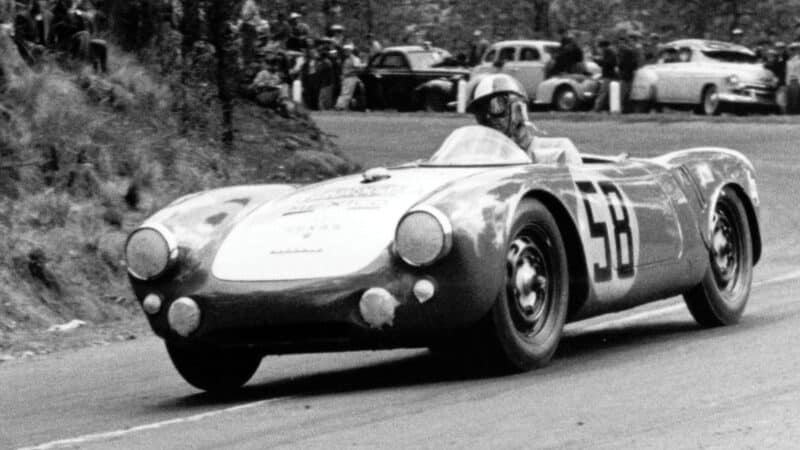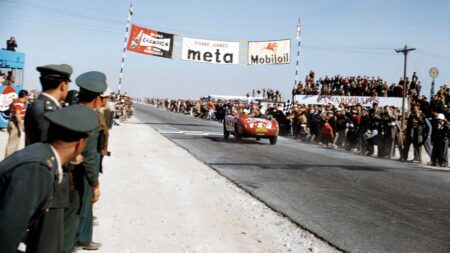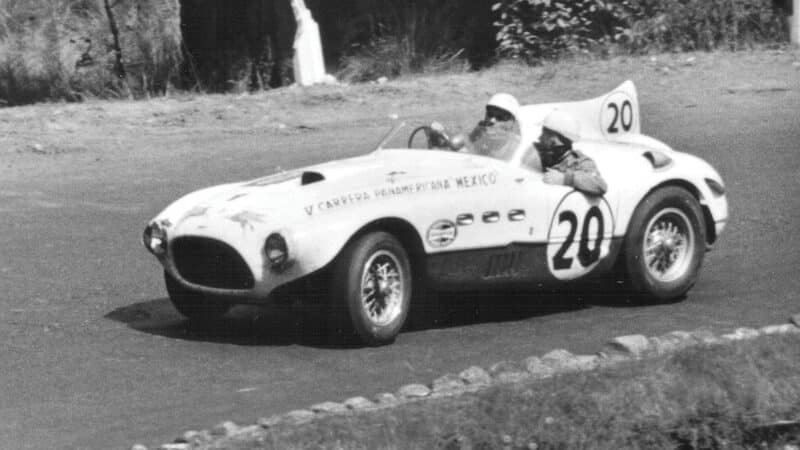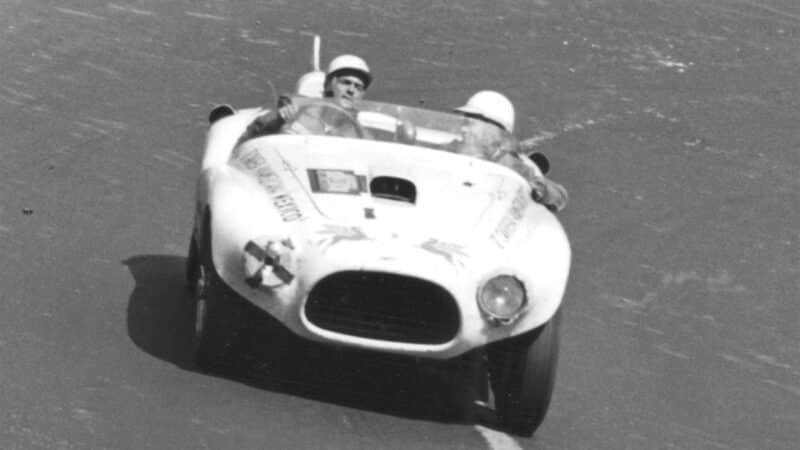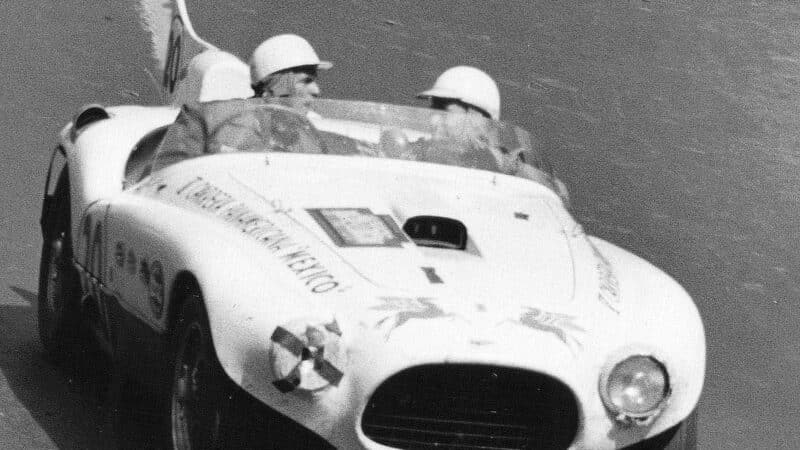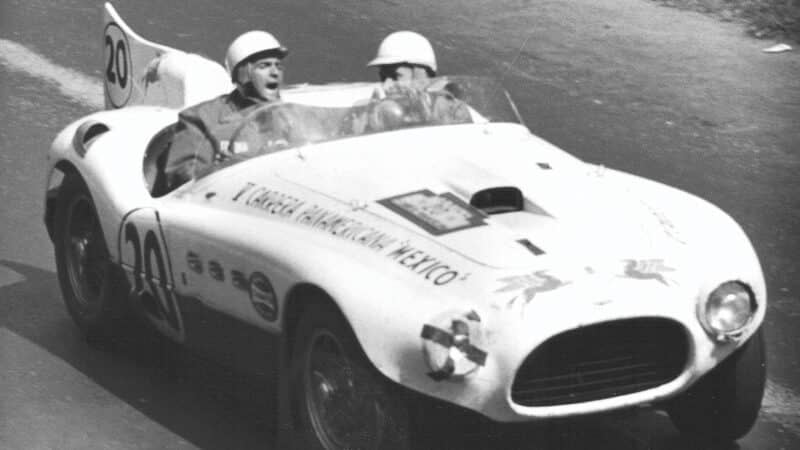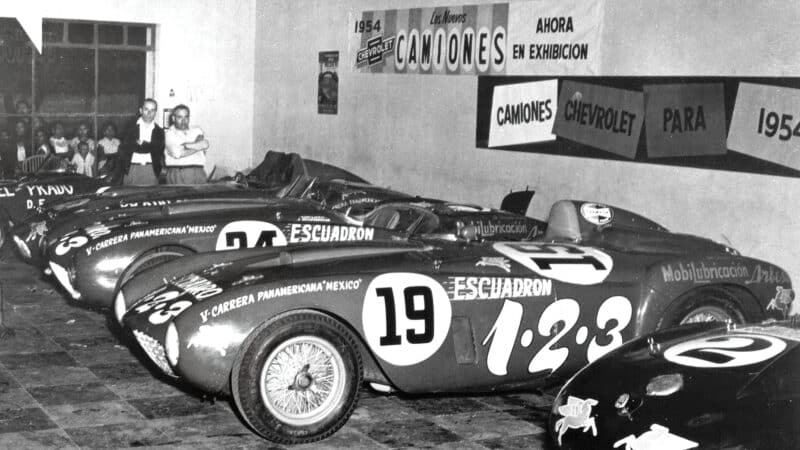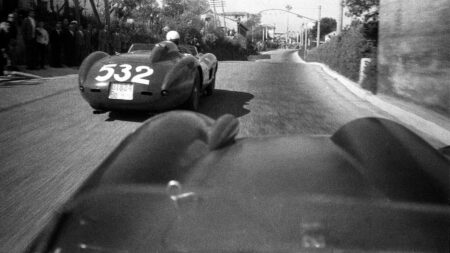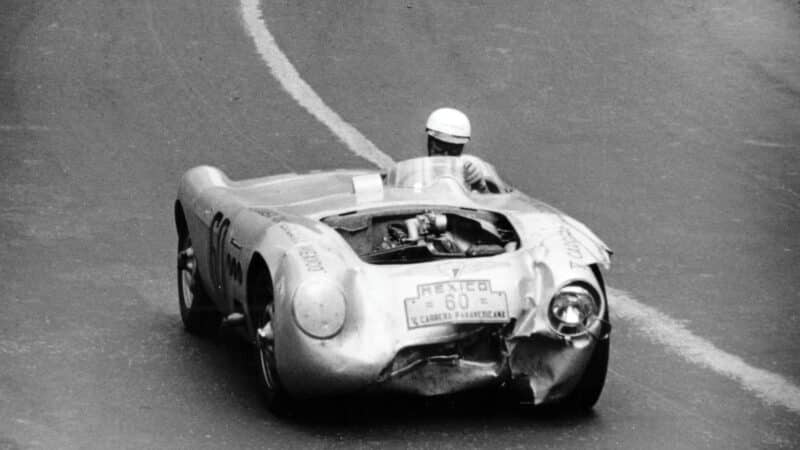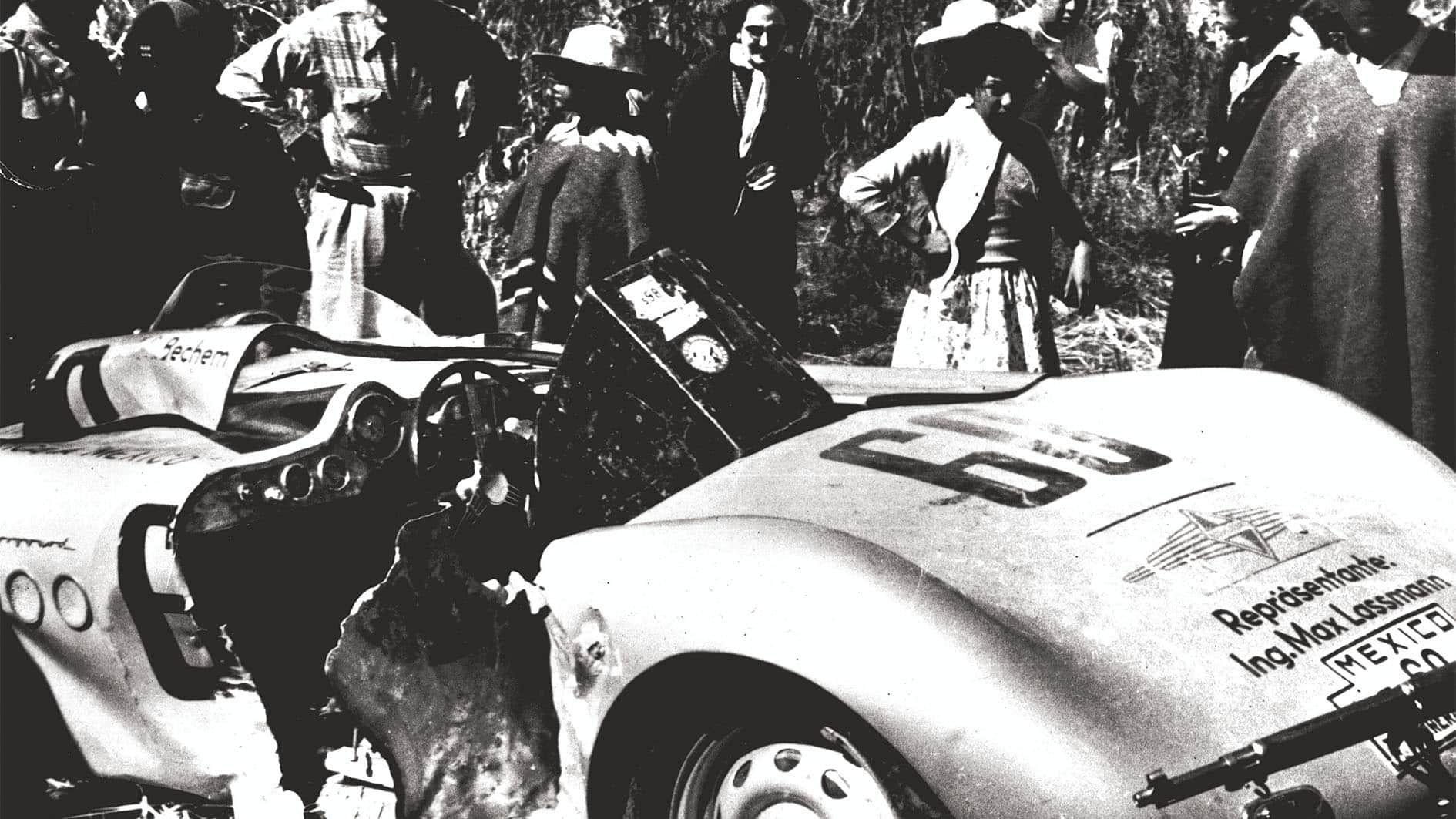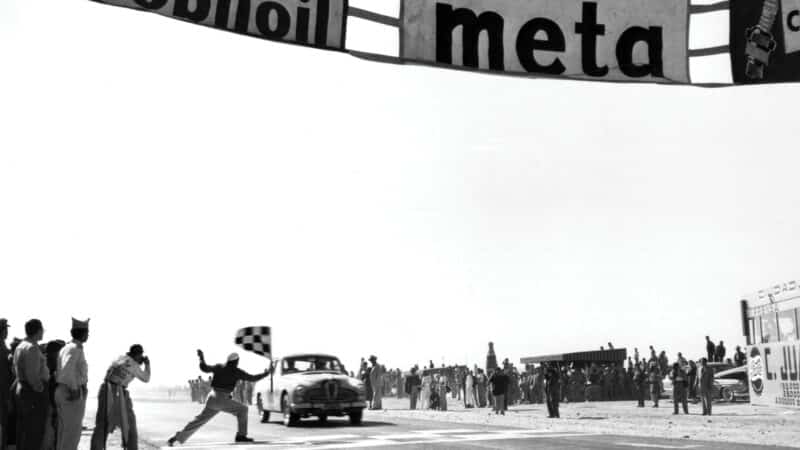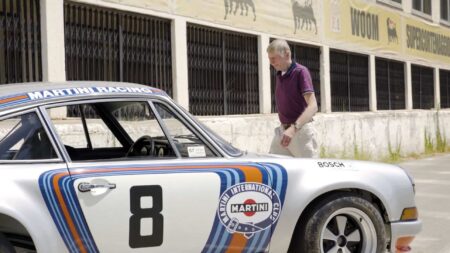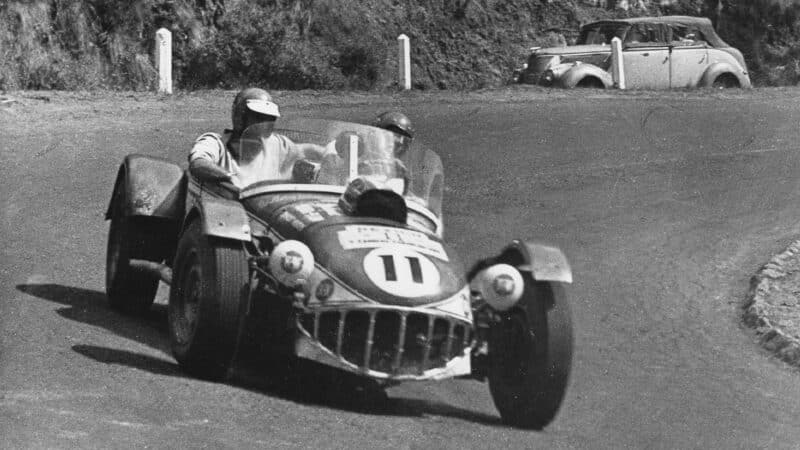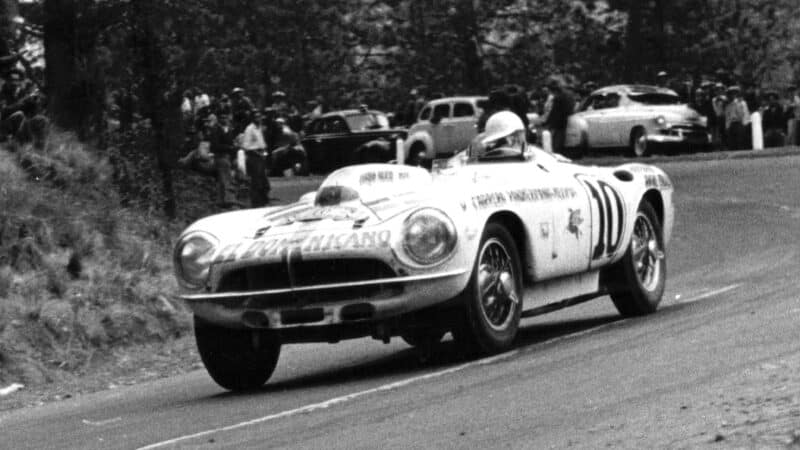A total of 166 drivers started the race (by which time two Argentine competitors had already died, after their car plunged into a ravine) and the purse totalled $117,000 – almost one million dollars in today’s money. Thousands of spectators lined the 329 miles between the start at Tuxtla and stage’s end at Oaxaca; thousands of soldiers patrolled the road, their job to keep spectators and livestock clear of the course. Their weapons were loaded; spectator casualties in previous years dictated this dramatic – but apparently effective – show of arms.
Day 1 November 19, 1954
Leg 1: Tuxtla-Gutierrez to Oaxaca
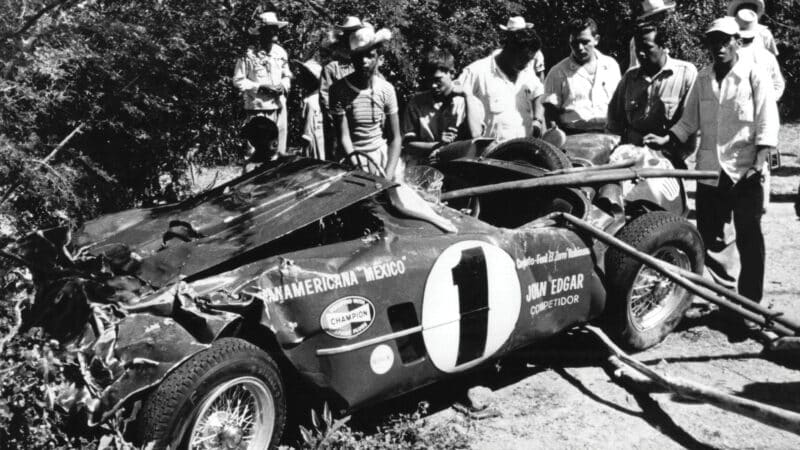
First to start – and first in a string of crashes – Jack McAfee’s 375 Plus Ferrari
Boyd Harnell
It was precisely 6:00am when I saw the green flag drop on Jack McAfee’s Ferrari 375 Plus as it shot away towards Oaxaca – a town it would never reach. As the last cars whined away, I leapt into my Olds and set out in pursuit with the press cordon. The rules specified that no press car was to pass another at any time, but violations of that sort were rampant from the start.
Storming past the 200-mile mark, we were flagged down by an official and came to stop at a place where a small group of people stood atop an embankment. Some 50 feet below stood McAfee’s Ferrari, and 100 feet away lay co-driver Ford Robinson’s body, motionless in the dirt. So began La Carrera: by the time I reached Oaxaca, 22 cars had already been eliminated, the majority by burned pistons and cooling troubles.
At the end of the first stage, Phil Hill and Richie Ginther led Umberto Maglioli by more than four minutes. The young Californians had a 4.5-litre engine, Maglioli a 4.9, and these 375-series Ferraris proved capable of nearly 175mph on La Carrera’s open stretches.
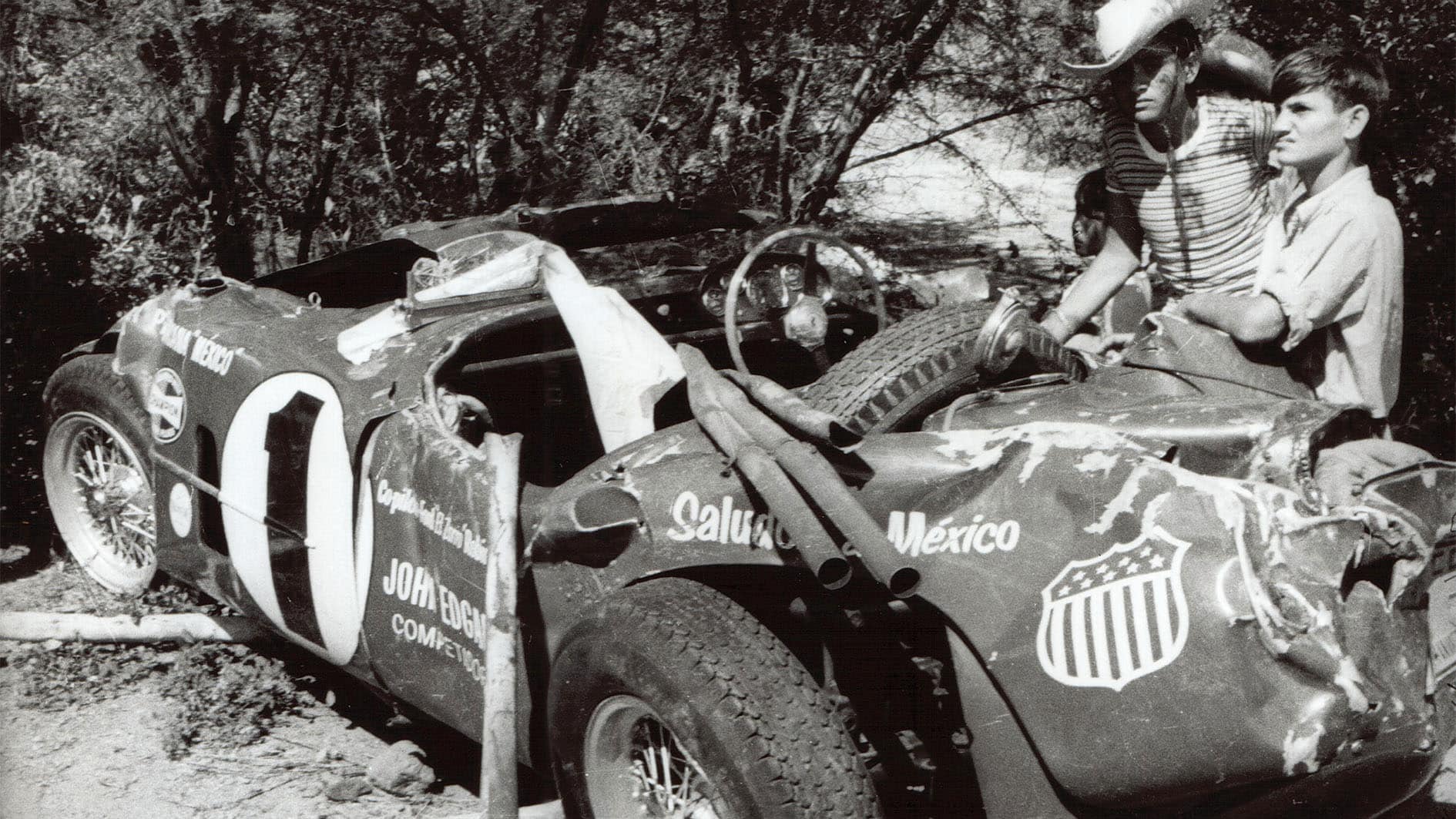
Day 2 November 20, 1954
Leg 2: Oaxaca to Puebla
Leg 3: Puebla to Mexico City
The second day was equally hard. Having already lost several cars, the Lincoln team suffered another setback when star driver Bill Vukovich breasted a hill at 100mph, skidded across the road and plunged over the side of a ravine. He had only minor injuries but the team’s only remaining prospect was the present class leader, Walt Faulkner. He flew into Mexico City as if riding a jet stream, chopping two minutes off the class record set by Johnny Mantz in ’53. Carroll Shelby flipped his Austin-Healey, breaking a collarbone and a few ribs, a Borgward driver was seriously injured in a pile-up and an Alfa also crashed out.
